THIS November we’re celebrating William E. Barrett’s Birthday with one of his pulp stories each Friday.
Before he became renown for such classics as The Left Hand of God and Lilies of The Field, Barrett honed his craft across the pages of the pulp magazines—and nowhere more so than in War Birds and it’s companion magazine War Aces where he contributed smashing novels and novelettes, True tales of the Aces of the Great War, encyclopedic articles on the great war planes as well as other factual features. Here at Age of Aces Books he’s best known for his nine Iron Ace stories which ran in Sky Birds in the mid ’30s!
From the Tarmac letters column 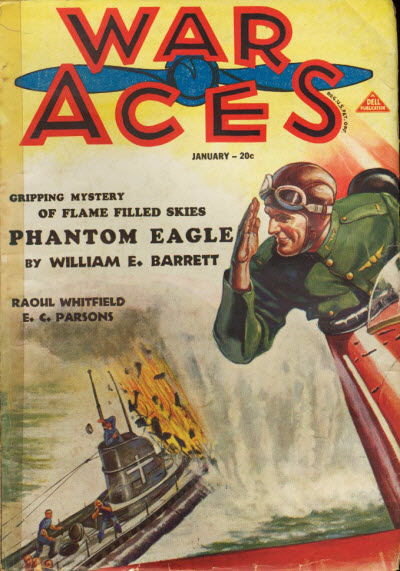 in the January 1932 War Aces—”Unless we misjudge the reading taste of our readers we feel that “Phantom Eagle,†by W. E. Barrett is about the ideal story. It has that balance of action, mystery and fantasy that gives you a new set of thrills. Obviously, it was too bizarre to be entirely fiction, so we asked the author about it. As is the case with most of Barrett’s fiction, it is based on some true incident. Here is his letter:
in the January 1932 War Aces—”Unless we misjudge the reading taste of our readers we feel that “Phantom Eagle,†by W. E. Barrett is about the ideal story. It has that balance of action, mystery and fantasy that gives you a new set of thrills. Obviously, it was too bizarre to be entirely fiction, so we asked the author about it. As is the case with most of Barrett’s fiction, it is based on some true incident. Here is his letter:
You’ve guessed it. There was a great deal of truth behind that yarn. We were up at Ayr, Scotland, getting the finishing touches on acrobatics. In my flight there was a young English lad of the aristocratic type so commonly turned out by Oxford. He was about the best on the field when he felt like it or thought he had an appreciative gallery watching him. He didn’t have a great deal of stomach, though.
He wiped his landing gear off one day making a stall landing and it was a week before he got over the resultant ground loops. Most of the chaps passed him by—the white feather was a bit obvious. We were all in a little pub one night imbibing a bit when our hero got into a brawl with a sour old Scotsman. He was getting the worst of it and was looking for a way to quit when the son of the heather knocked him cold.
A big, burly, slow-moving chap got up out of the corner and came over. He faced the Scotsman and methodically assumed a fighting pose.
“What a Lauterman starts, a Lauterman finishes.†Those were the only words he uttered, but he gave the Scotsman an unmerciful beating. By inquiring around a bit I found the history of those brothers who were so utterly dissimilar. I learned the history of that German father and English mother—the proud loyalty to anything that a Lauterman did held by that elder brother.
We went out to France and young Lauterman went with us. He didn’t hold up on the line in combat work and was transferred to a bombing outfit. He turned up missing in action one day and we never heard from him after that.
The rest of the story is pure fiction. I simply pictured what would happen if those two brothers met on the lines. In the last analysis I believe the elder Lauterman would have acted just as I have him do in the story.
— W.E. Barrett.
Hell’s hinges sealed the lips of that Unteroffizier in the pilotless Spad. None could tell how that phantom transfer had been made in shell-torn skies, or the meaning of that dying speech, “What a Lauterman starts, a Lauterman finishes”
From the January 1932 War Aces, it’s a story you won’t soon forget—William E. Barrett’s “Phantom Eagle!”
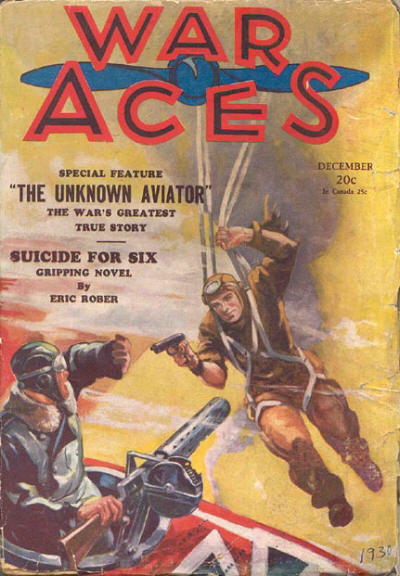 pen of the Navy’s own Allan R. Bosworth. Bosworth wrote a couple dozen stories with Humpy & Tex over the course of ten years from 1930 through 1939, mostly in the pages of War Aces and War Birds. The stories are centered around the naval air base at Ile Tudy, France. “Humpy” Campbell, a short thickset boatswain’s mate, first class who was prone to be spitting great sopping globs of tabacco juice, was a veteran seaplane pilot who would soon rate two hashmarks—his observer, Tex Malone, boatswain’s mate, second class, was a D.O.W. man fresh from the Texas Panhandle. Everybody marveled at the fact that the latter had made one of the navy’s most difficult ratings almost overnight—but the answer lay in his ability with the omnipresent rope he constantly carried.
pen of the Navy’s own Allan R. Bosworth. Bosworth wrote a couple dozen stories with Humpy & Tex over the course of ten years from 1930 through 1939, mostly in the pages of War Aces and War Birds. The stories are centered around the naval air base at Ile Tudy, France. “Humpy” Campbell, a short thickset boatswain’s mate, first class who was prone to be spitting great sopping globs of tabacco juice, was a veteran seaplane pilot who would soon rate two hashmarks—his observer, Tex Malone, boatswain’s mate, second class, was a D.O.W. man fresh from the Texas Panhandle. Everybody marveled at the fact that the latter had made one of the navy’s most difficult ratings almost overnight—but the answer lay in his ability with the omnipresent rope he constantly carried.




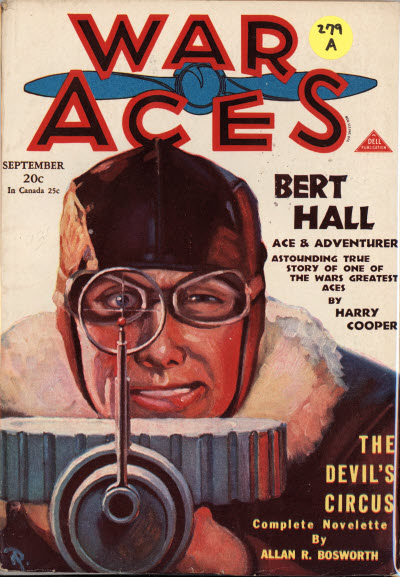 an early story from the prolific pen of Mr. Robert J. Hogan—the author of
an early story from the prolific pen of Mr. Robert J. Hogan—the author of 
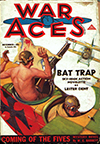 poignant story from the prolific pen of Robert Sidney Bowen. Bowen was a war pilot of the Royal Air Force, as well as the editor of one of the foremost technical journals of aviation in addition to penning hundreds of action-packed stories for the pulps.
poignant story from the prolific pen of Robert Sidney Bowen. Bowen was a war pilot of the Royal Air Force, as well as the editor of one of the foremost technical journals of aviation in addition to penning hundreds of action-packed stories for the pulps.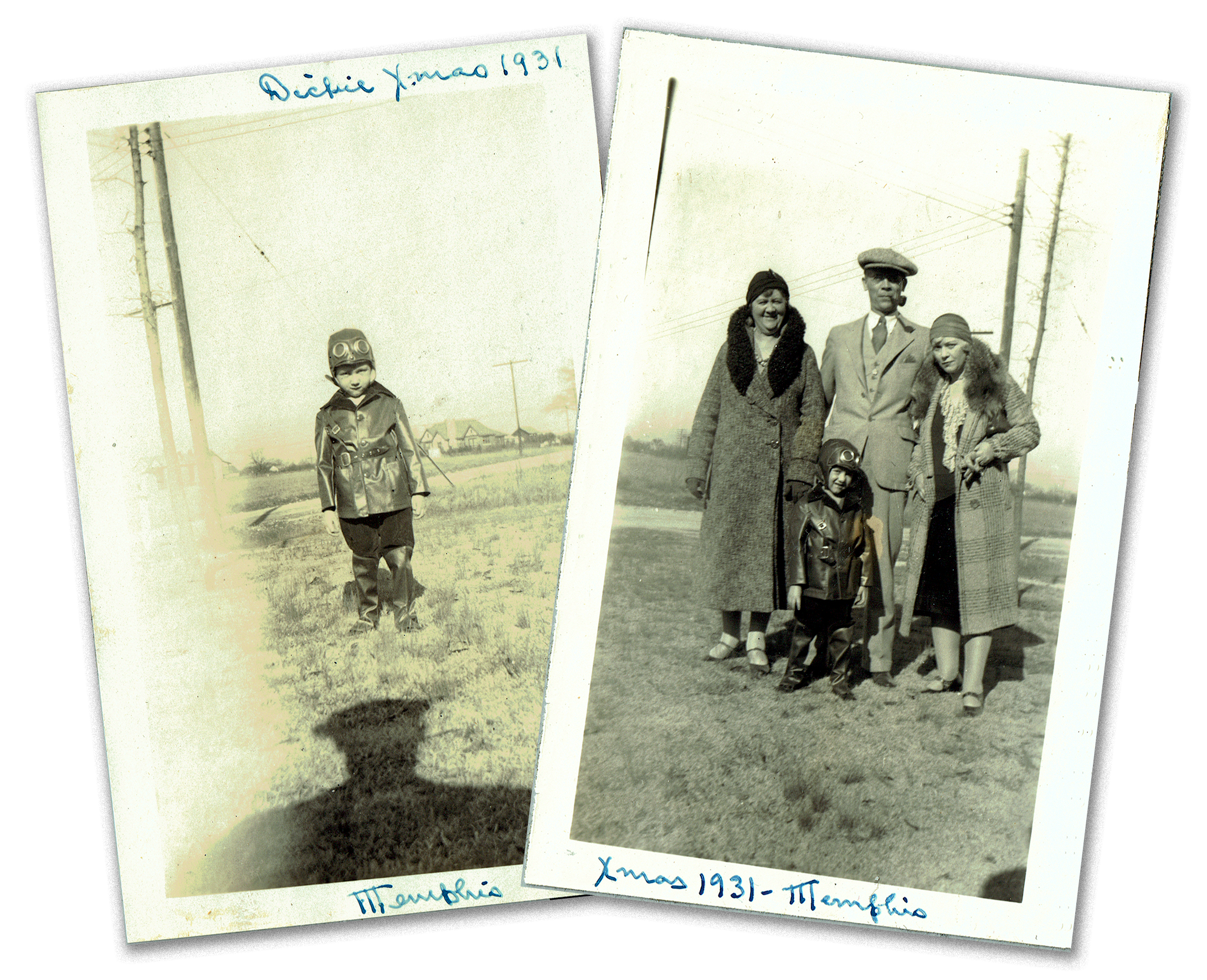
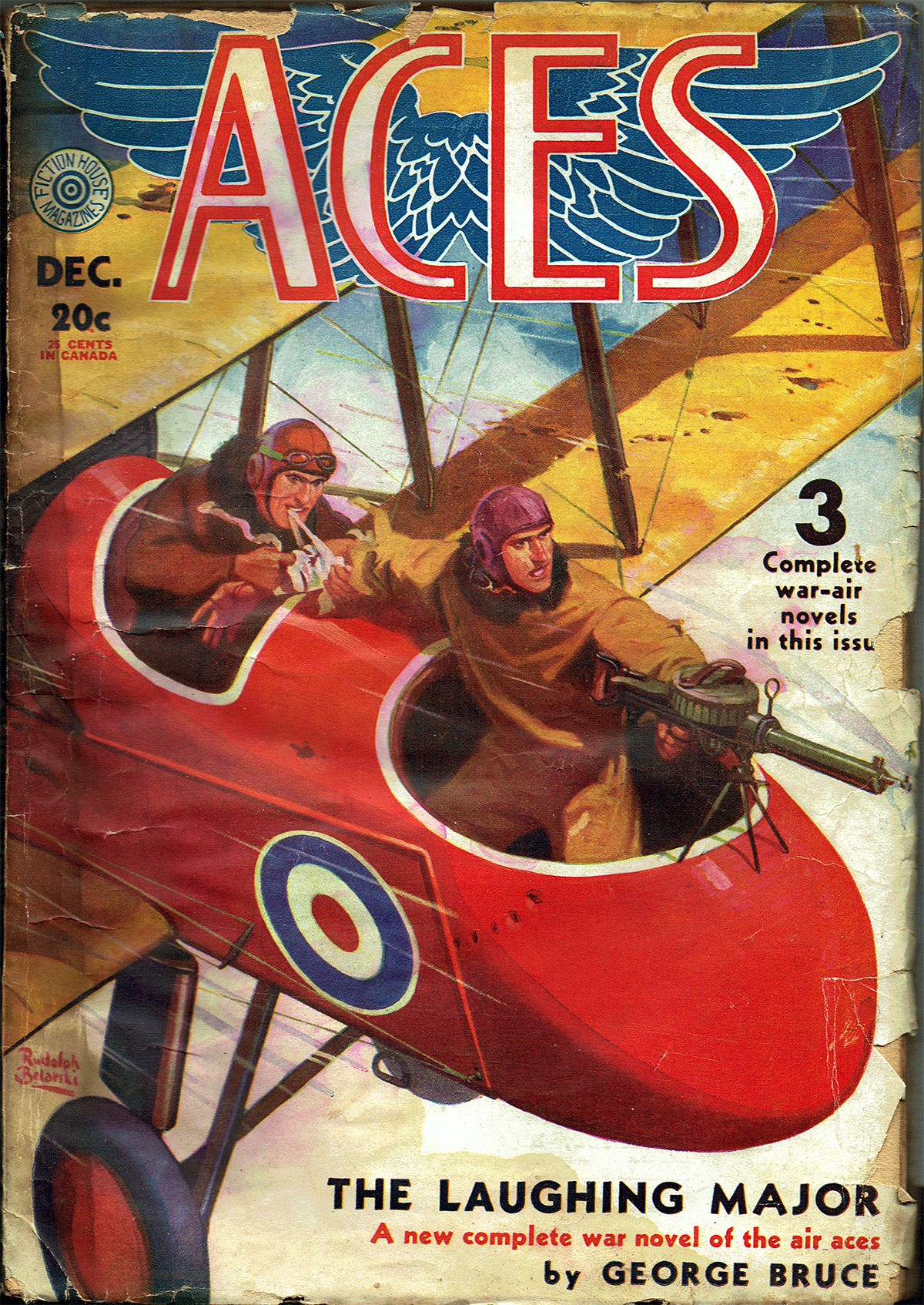
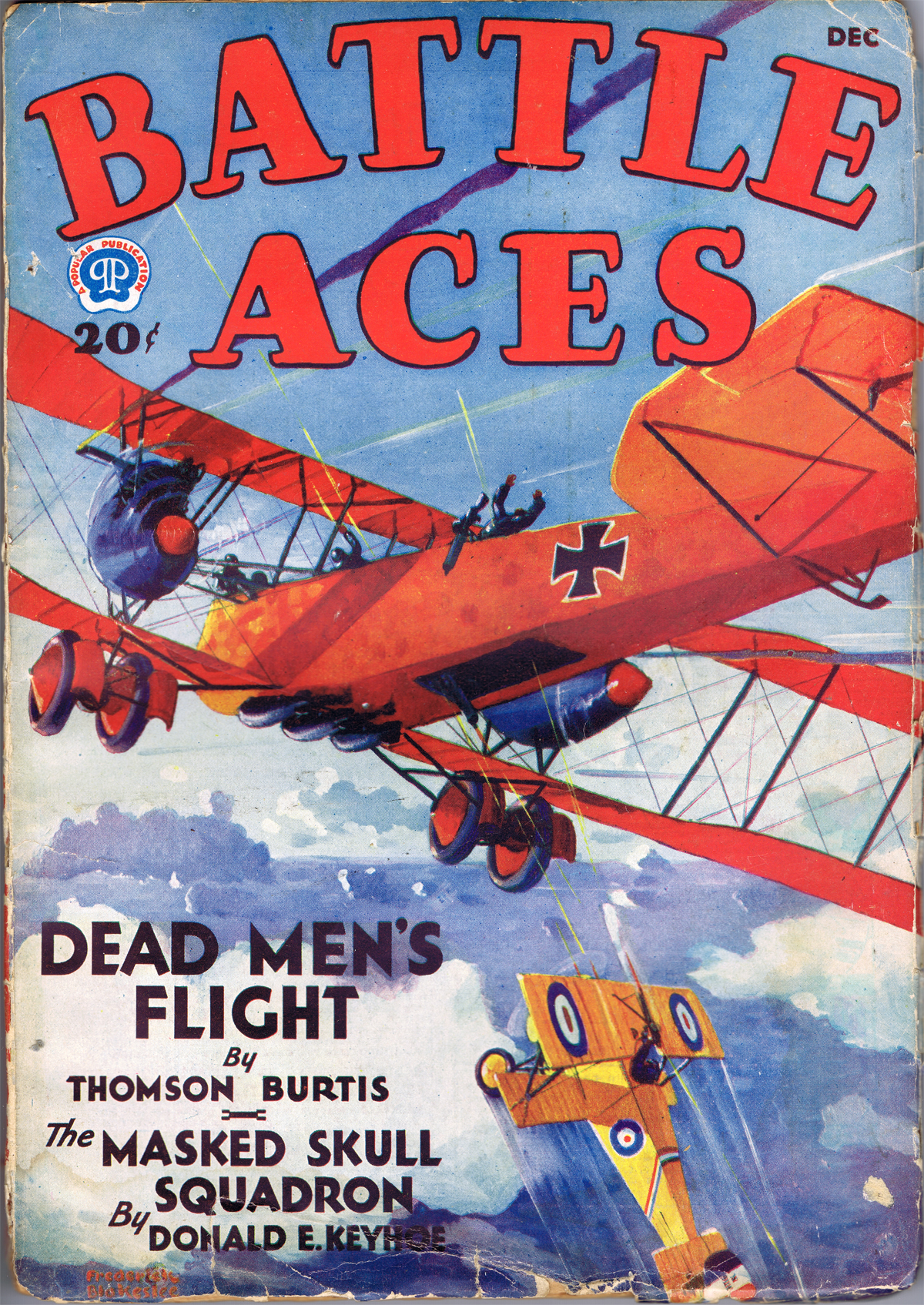
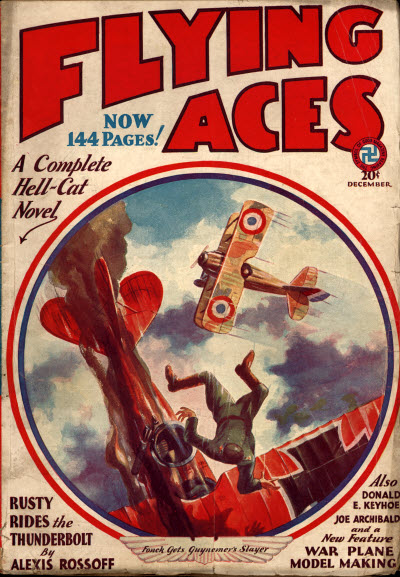

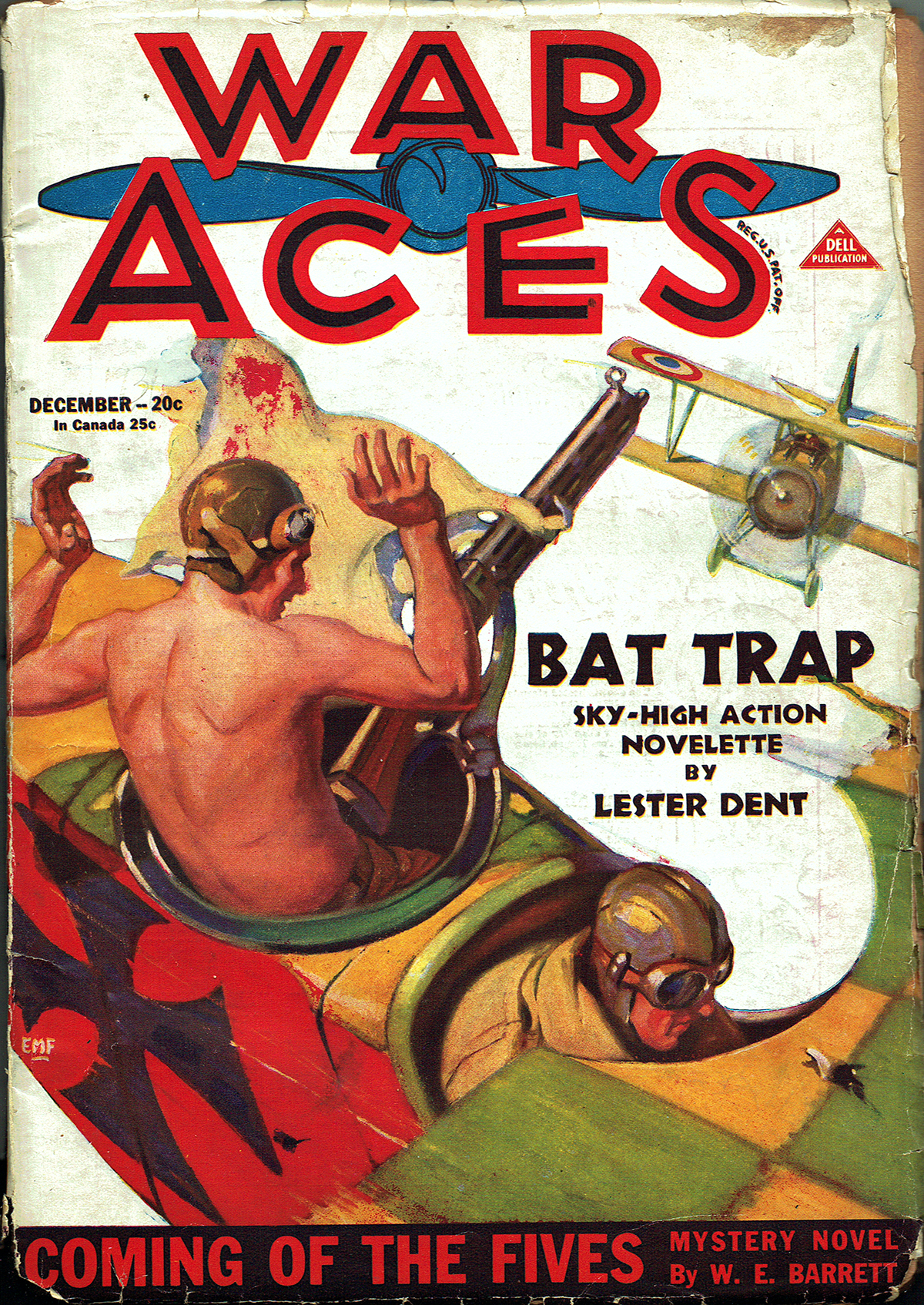
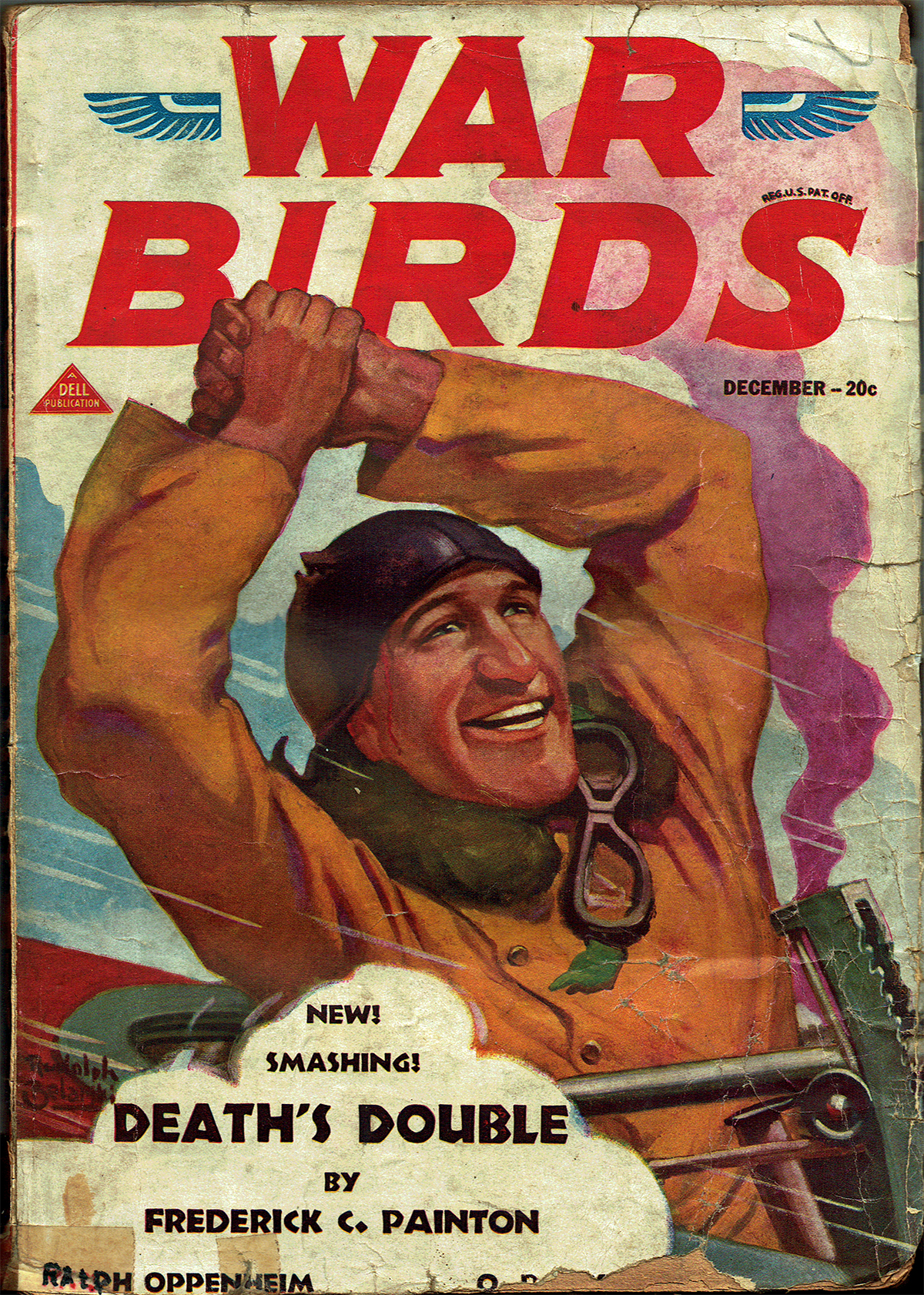
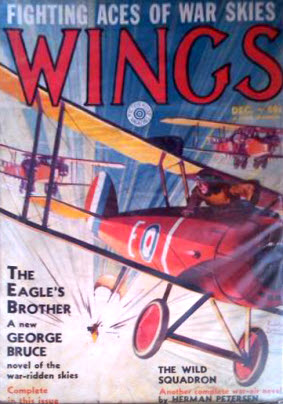
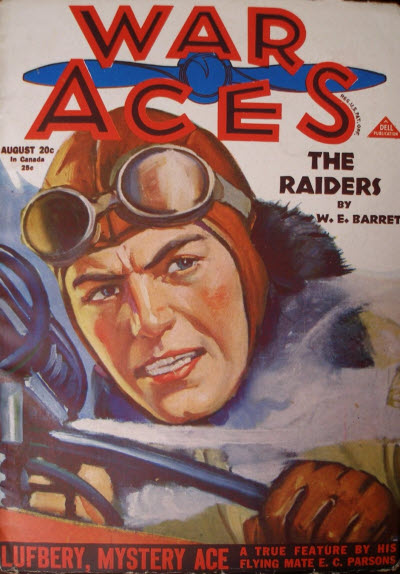 the greatest British offensive of the war got under way. A blazing line of steel whipped across France and into Belgium; from Croiselles to Loos, from Ypres to the Nieuport Canal and to the sea. Under the greatest artillery barrage in the history of the world a grim horde of muddy infantry hit the Hindenburg Line.
the greatest British offensive of the war got under way. A blazing line of steel whipped across France and into Belgium; from Croiselles to Loos, from Ypres to the Nieuport Canal and to the sea. Under the greatest artillery barrage in the history of the world a grim horde of muddy infantry hit the Hindenburg Line.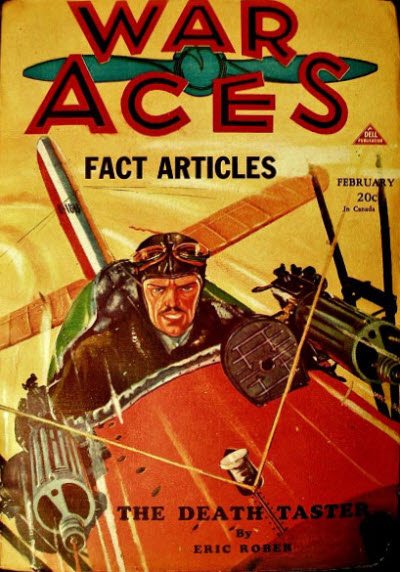 probably the only one of his kind in existence. Accidental aces there were aplenty in that big he war, but there was nothing accidental about Memphis Mason’s accomplishment. It was planned with an attention to detail that would do credit to a brigadier and it was attested by five of the finest fighters in the R.A.F. Those signatures are at the root of Mason’s secret sorrow to-day. At the foot of a square sheet of note-paper they bear flourishing witness to the fact that the signers witnessed the bringing down of five German planes by one Memphis Mason. Not one of those signers would have lied for anyone. They were officers and gentlemen and they saw what they said they saw. Yet, strangely enough, Memphis Mason never reached France. Therein lies a tale; one of the oddest tales to come out of the war and one that has never been told until this telling.
probably the only one of his kind in existence. Accidental aces there were aplenty in that big he war, but there was nothing accidental about Memphis Mason’s accomplishment. It was planned with an attention to detail that would do credit to a brigadier and it was attested by five of the finest fighters in the R.A.F. Those signatures are at the root of Mason’s secret sorrow to-day. At the foot of a square sheet of note-paper they bear flourishing witness to the fact that the signers witnessed the bringing down of five German planes by one Memphis Mason. Not one of those signers would have lied for anyone. They were officers and gentlemen and they saw what they said they saw. Yet, strangely enough, Memphis Mason never reached France. Therein lies a tale; one of the oddest tales to come out of the war and one that has never been told until this telling. in the January 1932 War Aces—”Unless we misjudge the reading taste of our readers we feel that “Phantom Eagle,†by W. E. Barrett is about the ideal story. It has that balance of action, mystery and fantasy that gives you a new set of thrills. Obviously, it was too bizarre to be entirely fiction, so we asked the author about it. As is the case with most of Barrett’s fiction, it is based on some true incident. Here is his letter:
in the January 1932 War Aces—”Unless we misjudge the reading taste of our readers we feel that “Phantom Eagle,†by W. E. Barrett is about the ideal story. It has that balance of action, mystery and fantasy that gives you a new set of thrills. Obviously, it was too bizarre to be entirely fiction, so we asked the author about it. As is the case with most of Barrett’s fiction, it is based on some true incident. Here is his letter: a story by Raoul Whitfield! Whitfield is primarily known for his hardboiled crime fiction published in the pages of Black Mask, but he was equally adept at lighter fair that might run in the pages of Breezy Stories. We’ve posted a few of his Buck Kent stories from Air Trails. While the Buck Kent stories were contemporary (1930’s), “The Singing Major” from the January 1932 issue of War Aces is set in The Great War and, in fact, based on a real person. At the time of publication, Whitfield told the editors of War Aces that the legends of this major are still talked about among the peasants in one locality. His was a temperament they couldn’t understand, hence many are the wild stories about him.
a story by Raoul Whitfield! Whitfield is primarily known for his hardboiled crime fiction published in the pages of Black Mask, but he was equally adept at lighter fair that might run in the pages of Breezy Stories. We’ve posted a few of his Buck Kent stories from Air Trails. While the Buck Kent stories were contemporary (1930’s), “The Singing Major” from the January 1932 issue of War Aces is set in The Great War and, in fact, based on a real person. At the time of publication, Whitfield told the editors of War Aces that the legends of this major are still talked about among the peasants in one locality. His was a temperament they couldn’t understand, hence many are the wild stories about him.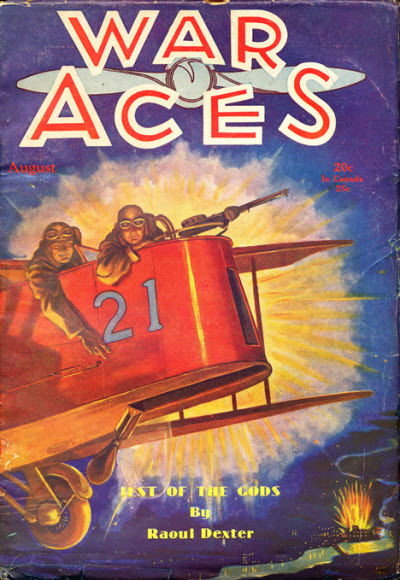 a story by another of our favorite authors—
a story by another of our favorite authors—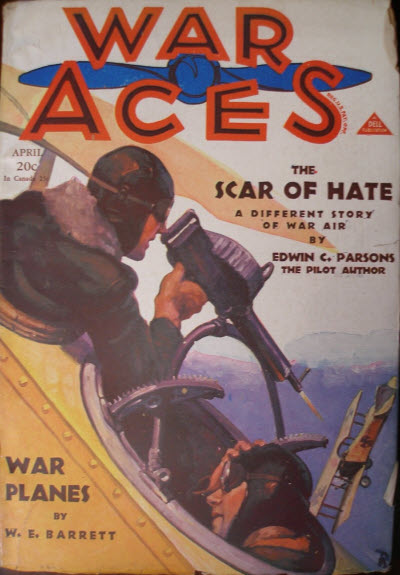 pen of the Navy’s own
pen of the Navy’s own 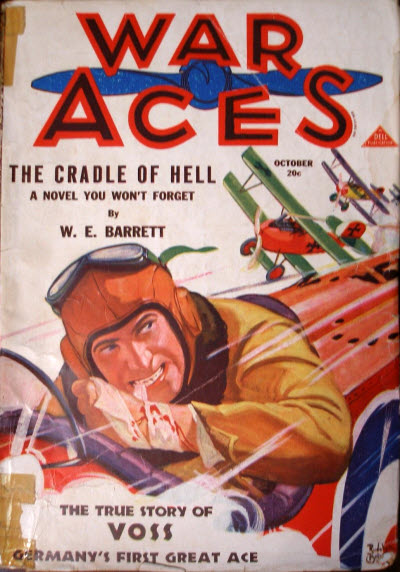 the month we have the story of Captain Jim Fogarty, a Montana Irishman in the service of Britain. He was Youth triumphant, a, veteran of six weeks on the fighting Front, commander of a squadron, and officially credited with victories over sixteen enemy airmen. The twin Ds of Death and Defeat had not touched him—but when it did, they brought him straight down into the cradle of hell and nearly cost him his life!
the month we have the story of Captain Jim Fogarty, a Montana Irishman in the service of Britain. He was Youth triumphant, a, veteran of six weeks on the fighting Front, commander of a squadron, and officially credited with victories over sixteen enemy airmen. The twin Ds of Death and Defeat had not touched him—but when it did, they brought him straight down into the cradle of hell and nearly cost him his life!
 of Captain Frederick Dietterich who is being relieved of his temporary command as captain and squadron leader to serve under a Prussian, Hauptmann von Kopf. Dietterich was an Alsatian and that had been a handicap. The Imperial Government accepted great service from Alsatians but withheld its trust while accepting them. His reputation on the other side of the line had hurt, too. He had been known as a clean sportsman. H.Q. had frowned at that. It favored officers who were feared. The last touch was his popularity with his men. The men of his jagdstaffel spoke of him as “Fritz”. The Imperial command could not associate authority with familiarity and Dietterich was going back to the flying ranks.
of Captain Frederick Dietterich who is being relieved of his temporary command as captain and squadron leader to serve under a Prussian, Hauptmann von Kopf. Dietterich was an Alsatian and that had been a handicap. The Imperial Government accepted great service from Alsatians but withheld its trust while accepting them. His reputation on the other side of the line had hurt, too. He had been known as a clean sportsman. H.Q. had frowned at that. It favored officers who were feared. The last touch was his popularity with his men. The men of his jagdstaffel spoke of him as “Fritz”. The Imperial command could not associate authority with familiarity and Dietterich was going back to the flying ranks.